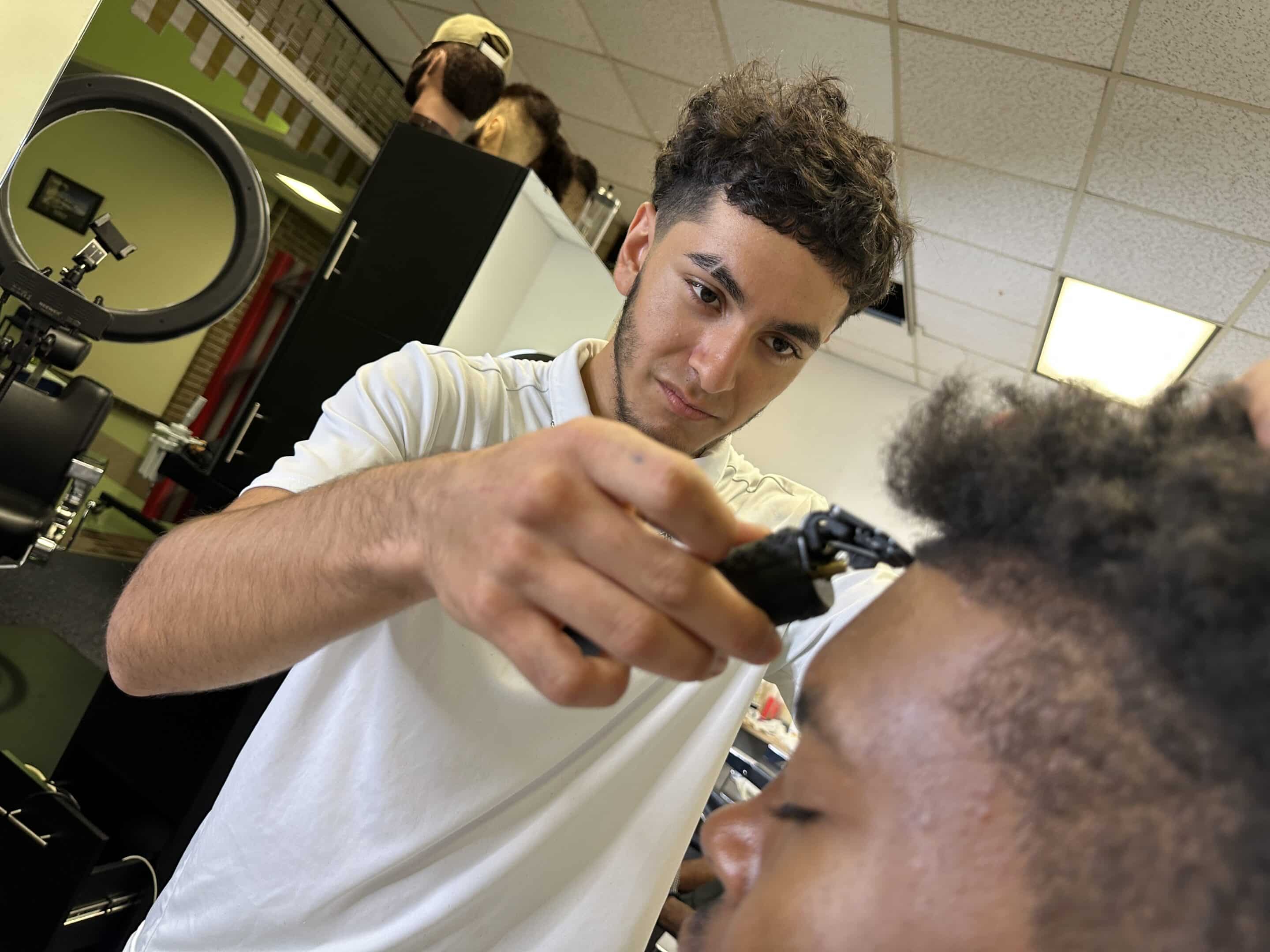For 18-year-old Ayanni Davis, dual enrollment is a practical step towards a future she began visualizing in elementary school, where a teacher prompted Davis to write about how her interests could align with her aspirations.
“I’ve always cared about people, so I thought being a nurse was one of the best ways to do that,” Davis said.
At first, Davis debated what certificate program to enroll in – the licensed practical nurse (LPN) or an emergency medical technician (EMT) pathway.
“In the end, I chose LPN because I thought it would better align with my career goals,” Davis said, who is inspired by the nurses in her family.
Davis’ straightforward approach of matching her career goals with the best certification program puts her on a clear career and academic pathway. While obtaining valuable skills and managing rigorous coursework, Davis is gaining the confidence needed to navigate her education strategically.
After obtaining her LPN, Davis will pursue a Bachelor of Science in nursing to become an OB/GYN nurse practitioner specializing in pediatrics. Concurrently, Davis attends St. Petersburg College to enhance her math skills to strengthen her admissions application to a four-year university.
Because of the dual enrollment program Davis is also more likely to succeed with her admissions test.
“We give students the admission test for free, and the passing rate has been over 90% for those dual enrollment students. On average, students who aren’t part of dual enrollment programs take the test twice before passing,” said Nancy Randolph, a dual enrollment admissions counselor at PTC.
Students participating dual enrollment are more likely to enroll and succeed in college, earning higher incomes.

Entry-level LPNs make nearly $53,000 annually, according to the U.S. Bureau of Labor Statistics. Once Pinellas Technical College student Ayanni Davis graduates with her bachelor’s degree, she can earn over $100,000 in Florida, according to the Bureau of Labor Statistics.
Challenges of Dual Enrollment
Dual enrollment programs are possible through articulation agreements between local school districts and Florida public or eligible private education institutions, which allow qualified high school students to take postsecondary coursework in approved areas that simultaneously count towards a high school diploma. Students select the curriculum based on their interest and career goals.
For high school students who want to work as soon as they graduate instead of pursuing a two- or four-year degree, dual enrollment can serve as a fast track towards earning a full-time salary. However, many dual enrollment programs tend to extend beyond a student’s senior year, which requires them to re-enroll after graduation to complete coursework and attain industry certifications. As high school graduates who are no longer district-funded, students must secure funding separately or by working with a financial aid counselor.
“Students find out before coming in, but they don’t always process it,” Randolph said. PTC’s counselors staff and financial aid officers offer ongoing student support services that help students navigate the opportunities and challenges of the program. “There’s an incentive attending dual enrollment with us, the Pinellas County School district will pay tuition for our dual enrollment students, which helps cut some of the costs for their adult enrollment,” Randolph adds.
Upon graduating from high school, students grapple with choosing the most advantageous and streamlined dual enrollment program to earn an industry certification or accrue college credits that count as more than just electives. The landscape transforms as individuals transition from high school students to graduates, emphasizing the pivotal role of articulation agreements. These agreements wield significant influence by dictating which courses are offered and funded and how credits are recognized in post-high school education.
PTC’s dual enrollment program is based on clock hours. Enrolled juniors and seniors are limited in the number of hours they can complete. Transportation, class, and homework time, adds to current course loads, and may delay enrollment to a traditional four-year college or university.
The Path to a Career Certificate
As a senior, 18-year-old Ray Hernandez completed half the coursework required to become a barber and is currently funded by a Pell Grant through Federal Student Aid.
“I had family members and teachers from my school say dual enrollment might be a good option,” Hernandez said. “So, I looked into it and found out that PTC had barbering, and that was exactly what I wanted to be.”
As a child, Hernandez was exposed to the craft through his mom, a seasoned cosmetologist and hairdresser. He then taught himself the basics of cutting hair by watching online videos.
“And that’s when I knew I wanted to do hair because it’s a lot of creativity and openness to it. Every day is something new,” Hernandez said.

Pinellas Technical student, Ray Hernandez, has an entrepreneurial spirit and likes the flexibility of either working as an employee or forging his path as an independent contractor. The average salary for a barber in Florida is over $33,000 annually, according to the U.S. Department of Labor.
